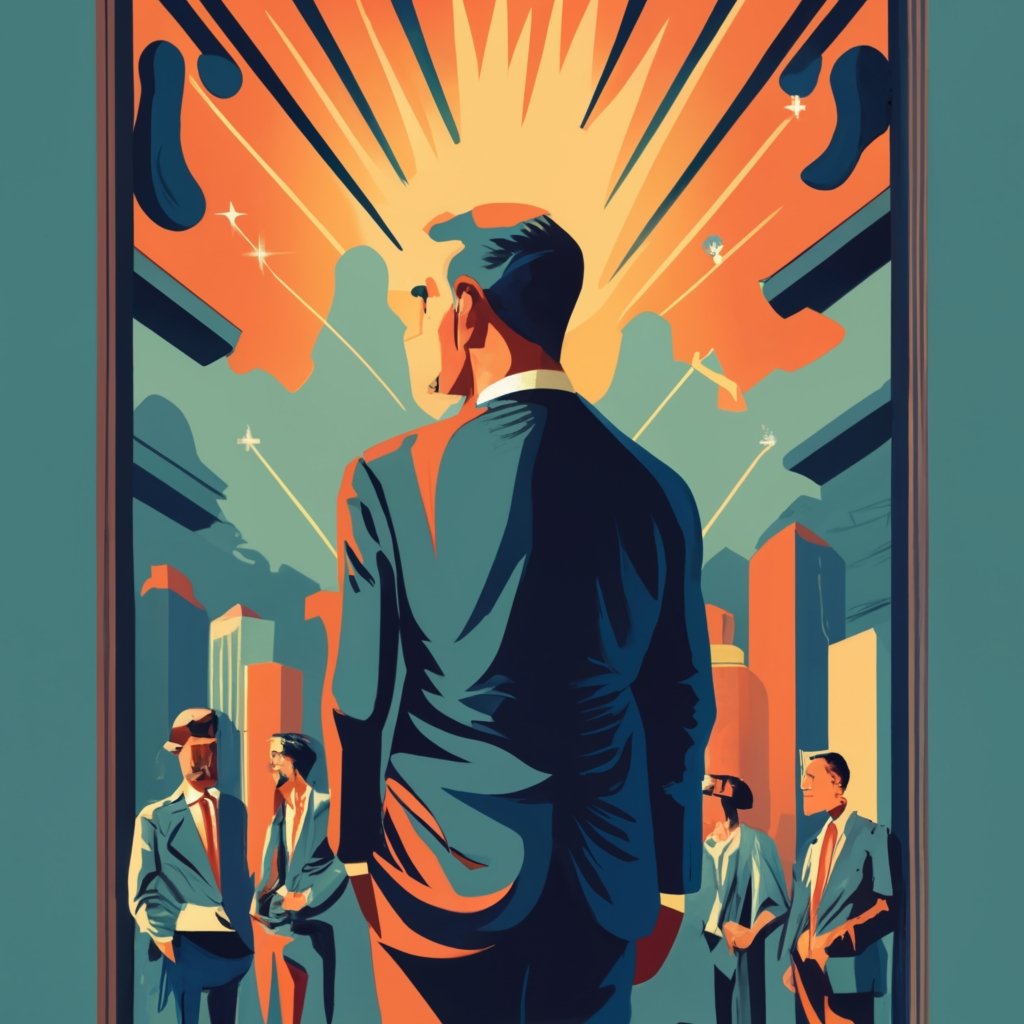Table of Contents
Crafting a vision is an essential strategic exercise for organizations aiming to chart a course for future growth and success. A well-articulated vision statement acts as a guiding star for the company, providing direction and motivation for its team members. It outlines the organization’s long-term goals and serves as a foundation for developing strategies and making decisions that align with the company’s core values and purpose.
The process of developing a vision statement requires careful consideration and a deep understanding of the unique identity and aspirations of an organization. It reflects what the organization stands for and where it aims to be, thereby shaping the culture and influencing the behavior of all associated with the company. This concise declaration must encapsulate the essence of the organization’s goals in a way that resonates both internally with employees and externally with customers and stakeholders.
An effective vision statement is inspirational, clear, and aspirational, setting a clear path forward without prescribing the specific actions to get there. It encourages employees to work towards a common goal and helps clients and partners to understand the company’s direction and potential. It is a crucial component that helps differentiate an organization, reflecting its ambitions and serving as a tool for strategic planning and goal setting.

Understanding Vision Development
Crafting a vision is central to providing strategic direction for an organization. It articulates the future state an organization aims to achieve, guiding decision-making and strategy.
Definition and Importance of a Vision Statement in Shaping an Organization’s Future
Crafting a vision statement serves as a forward-looking declaration, showcasing an organization’s aspirations and the ultimate goal it seeks to fulfill. Its importance lies in its ability to inspire employees, guiding them towards shared achievements and fostering a cohesive organizational culture. Strategic alignment is reinforced as the vision sets a definitive trajectory for growth and innovation.
Overview of Different Methods for Developing a Vision, Focusing on the Interview Method and the Back to the Future Method
Various methods are employed to develop a compelling vision. Two notable methods include:
- Interview Method: Engages stakeholders through direct dialogue, unearthing insights that inform the vision’s creation. By interviewing a diverse set of individuals within the organization, including employees, management, and customers, a multifaceted understanding is formed, which contributes to a well-rounded vision statement.
- Back to the Future Method: It envisions the organization’s successful future and works backward to the present. This method assists in pinpointing crucial milestones and strategies required to achieve the envisioned future, clarifying the path forward with a focus on long-term success.
Developing a vision through these approaches hinges on inclusive participation and a thorough understanding of the organization’s values and purpose.

The Interview Method for Vision Development
The Interview Method for Vision Development is a strategic approach integral for capturing the holistic aspirations of an organization. It hinges on inclusive dialogue and the gathering of diverse perspectives to form a unified future vision.
Detailed Explanation of the Interview Method
The Interview Method is a qualitative technique that involves structured conversations aimed at discovering the values, expectations, and long-term objectives relevant to the organization’s future. It requires attentiveness to subtle nuances and a keen ability to translate personal narratives into strategic insights.
Steps Involved in the Interview Process
- Preparation: Define the objectives, select interview participants, and decide on the logistics.
- Crafting Questions: Develop a set of tailored questions designed to evoke comprehensive and thoughtful responses.
- Conducting Interviews: Engage with stakeholders through one-on-one meetings or focus groups.
- Data Analysis: Codify responses to identify patterns and themes.
- Synthesis: Consolidate findings to discern a coherent vision.
Identifying Key Stakeholders to Interview
Key stakeholders typically include senior management, employees, customers, investors, and industry experts. Their involvement ensures that the vision encompasses a wide array of viewpoints, thereby enhancing the depth and relevance of the collected data.
Crafting A Vision: Insightful Questions That Explore Expectations, Aspirations, and Perceptions of the Company’s Future
Questions could range from probing the organization’s current strengths to eliciting views on future trends. For instance, asking “Where do you see our company in the next ten years?” encourages respondents to consider both tactical steps and ultimate ambitions.
Conducting Interviews and Gathering Data
Interviews are best conducted in a setting that encourages open communication, whether in person, over the phone, or via video conferencing. Precise note-taking or recording is crucial for capturing the full breadth of discussions.
Analyzing Interview Data to Identify Common Themes and Visions for the Future
The analysis should be methodical, initially coding responses into categories and then interpreting them to identify a consensus on core themes. This stage is vital for revealing the collective vision stakeholders share for the company’s path forward.
The Back to the Future Method
The Back to the Future Method is an innovative approach for developing a compelling vision statement. It involves envisioning the desired future of a company and then working backward to outline the steps required to get there.
Description of the Back to the Future Method
This method is a strategic exercise that encourages organizations to dream big about their future and then deconstruct these dreams into actionable steps. By imagining the company’s most successful future state, leadership can better understand the actions necessary to achieve this vision.
Step-By-Step Guide to Implementing This Method
- Gather key stakeholders for a brainstorming session.
- Lead with a prompt that encourages participants to consider the company’s best-case scenario in the future.
- Capture all ideas, ensuring a variety of perspectives are considered.
Imagining the Company’s Future Success
Stakeholders attempt to picture the company’s success without the constraints of current capabilities. They might ask questions such as, “What will our company be known for?” or “What impact will we have made?” This fosters a forward-looking mindset.
Describing What That Success Looks Like in Detail
Participants provide specific descriptions of the company’s future, such as market position, customer perceptions, and employee engagement. Concrete details about potential achievements make the vision more tangible.
Working Backward to Identify the Milestones and Strategies Needed to Achieve That Future
Once a detailed picture of success is established, stakeholders identify key milestones. These serve as benchmarks, tracking progress towards the envisioned future.
Synthesizing This Information into a Cohesive Vision Statement
All insights and details are distilled into crafting a vision statement. This statement serves as a guiding star for strategic planning, decision-making, and daily operations, keeping the company aligned with its long-term goals.

Synthesizing Insights from Both Methods
Crafting a vision, it’s essential to merge insights from qualitative interviews with the forward-thinking Back to the Future method. This union provides a robust foundation to imagine and articulate a dynamic future.
Strategies for Combining Insights from the Interview and Back to the Future Methods
The Interview method garners rich qualitative data rooted in personal experiences and nuanced perceptions, while the Back to the Future method enables stakeholders to project their aspirations onto a future timeline. The key to merging these approaches lies in aligning the detailed narratives from interviews with futuristic milestones. Here are steps to facilitate that integration:
- Identify Common Themes: Distill interview data to pinpoint recurring topics or concerns.
- Map Against Timeline: Place these themes onto a timeline informed by the Back to the Future explorations.
- Bridge Gaps: Actively seek a convergence between what is desired (future goals) and what is experienced (current realities).
- Develop Insights: Use this thematic bridge to craft insights that are both grounded and visionary.
Tips for Integrating Diverse Perspectives and Creating a Unified Vision
Integrating perspectives from various stakeholders requires a balanced approach that respects existing viewpoints while striving for a common ground. The following tips can enhance this process:
- Establish Clear Criteria: Boldly define criteria for inclusion to ensure that the synthesized vision showcases a collective direction.
- Prioritize Transparent Communication: Create an open forum that allows for every voice to be heard and considered.
- Reflective Assessment: Periodically review the distilled vision to ensure it remains true to the composite insights and objectives.
- Dynamic Adjustments: Be willing to make iterative changes as new information and viewpoints emerge.
Synthesizing insights from different methods enriches the vision-crafting process, providing a multi-faceted outlook that is more likely to resonate and engage all contributors.
Finalizing and Articulating Your Vision
Once the vision statement draft is developed, the final step is to refine and convey it in a way that is clear, concise, and compelling. It’s essential to ensure that the vision is not only well-crafted on paper but also resonates with and inspires the intended audience.
Guidance on Refining and Finalizing the Vision Statement
One must review the vision statement for clarity and brevity, ensuring it is free of jargon and complex language. It should encapsulate the essence of the organization’s aspirations. Feedback should be solicited from a diverse group of stakeholders to garner different perspectives, which can illuminate areas for improvement. Here are key considerations for finalization:
- Simplicity: The vision should be succinct and easily understood.
- Specificity: While keeping it brief, the vision should also convey a distinct direction or goal.
- Alignment: It should be aligned with the core values and purpose of the organization.
Best Practices for Articulating the Vision Clearly and Compellingly
To effectively articulate the vision, one should utilize storytelling techniques that connect emotionally with the audience. The narrative should highlight the impact of achieving the vision and the role individuals play in making it a reality. Strategies for a compelling articulation include:
- Consistency: Use consistent messaging across all channels.
- Inspiration: Utilize powerful and evocative language to inspire action.
- Visibility: Ensure the vision statement is prominently displayed and communicated regularly.
By harnessing these approaches, the final vision statement will not only be well-defined but will also captivate and motivate all stakeholders involved.
Implementing and Communicating the Vision
Once you have crafted a vision, the challenge lies in making it a cornerstone of the organization’s journey. The subsequent stages involve clearly articulating this vision and weaving it into the fabric of organizational culture and daily operations.
Strategies for Effectively Communicating the New Vision to Stakeholders
- Utilize Various Communication Channels: It’s essential to deliver the vision through multiple platforms such as emails, meetings, social media, and company intranets to reach stakeholders efficiently.
- Consistent Messaging: Ensure the language and core messages about the vision are consistent across all communication to solidify understanding and support.
Tips for Embedding the Vision into Organizational Culture and Operations
- Leadership Exemplification: Leaders should model behaviors and decisions that reflect the vision, serving as living embodiments of the organizational aspirations.
- Incorporate into Milestones: Recognize and celebrate when teams align with the vision in their projects or reach milestones that advance the vision, reinforcing its relevance and value.
Conclusion
In crafting a vision that truly propels a company forward, one must consider the established effectiveness of structured methodologies. The preceding discussion offers valuable insights into two particular techniques: the Interview and the Back to the Future Methods.
Summarizing the Benefits of Using the Interview and Back to the Future Methods for Vision Development
Interview Method:
- Gathers diverse perspectives: By interviewing key stakeholders, companies gain a multifaceted understanding of their aspirations and values.
- Fosters inclusivity: This method ensures that diverse viewpoints contribute to the vision, making it more representative of the entire organization.
Back to the Future Method:
- Encourages bold thinking: This approach allows team members to envision a successful future without current limitations, leading to more ambitious goals.
- Clarifies long-term objectives: It helps define what ultimate success looks like, providing clear targets for the company to strive toward.
Encouraging Continuous Engagement and Revision of the Vision as the Company Evolves
- Dynamic Process: A vision is not static; as the company grows and the market evolves, the vision must be revisited and refined to remain relevant and inspiring.
- Engagement Practices: Regularly scheduled reviews and open communication channels encourage ongoing engagement with the vision, ensuring it continues to guide the company’s strategic decisions.
FAQ
- What is ‘Crafting a Vision’ and Why is it Important?
- Explanation of what crafting a vision involves and its significance in setting strategic direction and inspiring employees.
- How Does the Interview Method Aid in Crafting a Vision?
- Details on how engaging stakeholders through interviews can provide diverse perspectives essential for formulating a comprehensive vision.
- What are the Key Steps in the Interview Method for Vision Development?
- Outline the process involved in the Interview Method, from preparing questions to analyzing data.
- How Does the Back to the Future Method Differ from Traditional Vision Crafting Techniques?
- Explanation of the unique aspects of the Back to the Future Method, including its focus on envisioning future success and working backward.
- Can Small Businesses Benefit from Crafting a Vision?
- Insights into how small businesses can leverage vision crafting to guide growth and motivate teams.
- What Makes an Effective Vision Statement?
- Characteristics of a compelling and impactful vision statement.
- How Often Should a Vision Statement Be Revised?
- Guidance on the frequency of revisiting and potentially revising the vision statement to ensure it remains relevant and inspiring.
- What Role Do Employees Play in Crafting a Vision?
- Discussing the importance of involving employees in the vision crafting process and how their input can be integrated.
- How Can a Company Communicate Its Vision to Stakeholders Effectively?
- Strategies for sharing the vision with internal and external stakeholders in a way that is engaging and aligns with company values.
- What Are Common Challenges in Crafting a Vision and How Can They Be Overcome?
- Addressing potential obstacles in the vision crafting process and providing solutions to navigate these challenges.
Recent Posts
Understanding Time Feature ReleaseConcept of Time in Product RoadmapsImportance of Timing for Feature ReleasesPlanning the RoadmapSetting Strategic GoalsIdentifying Key MilestonesPrioritizing...
Portfolio Kanban: A Powerful Tool for Effective Portfolio Planning
Fundamentals of Portfolio KanbanDefining Portfolio KanbanKey Principles of Portfolio PlanningBenefits of Portfolio KanbanSetting Up a Portfolio Kanban SystemIdentifying Portfolio ItemsVisualizing the...

